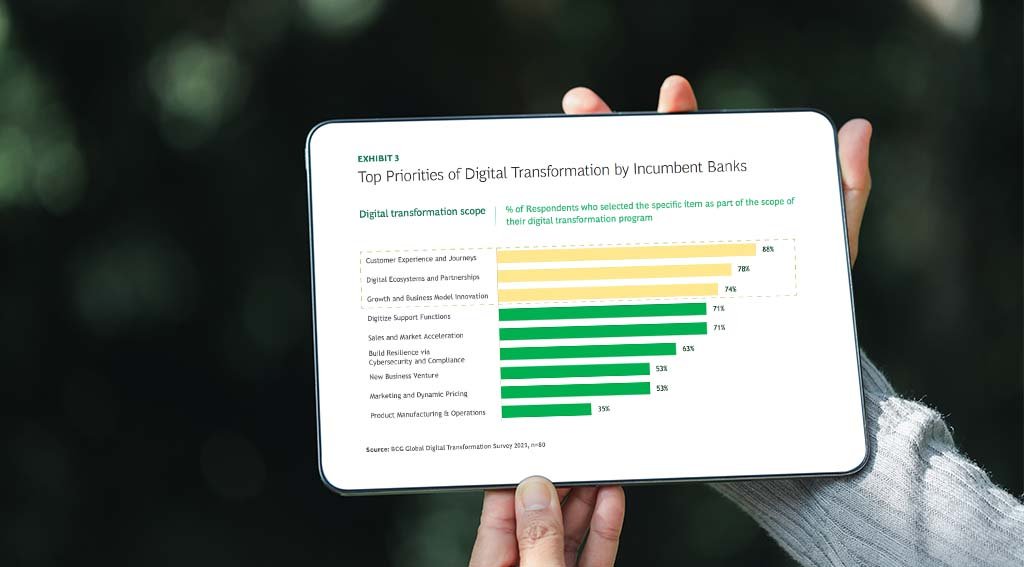Many incumbent banks in Southeast Asian have failed to modernize their core banking systems, focusing instead on enhancing front-end channels such as mobile and Internet banking, as well as customer relationship management (CRM) instead.
However, according to a new report by Boston Consulting Group (BCG), modernizing core banking systems is no longer optional, but is now a strategic necessity for Southeast Asian banks to meet customer expectations, compete with digital challengers, unlock new revenue, and maintain resilience in an increasingly digital financial landscape.
The report, released in June 2025, outlines the urgency of core banking modernization in Southeast Asia. It examines the state of the market, the key obstacles holding banks back, and the imperatives for immediate action.
According to the report, most Southeast Asian banks (90-95%) still rely on aging, on-premises mainframe systems. Only 3-5% of banks are cloud-ready or optimized, and just 1-2% are fully cloud-native, mostly digital-only banks built from the ground up.
In fact, the average age of core banking systems in Southeast Asian banks is estimated to be 20 years or more, reflecting a gap of at least two generations in technology evolution, from mainframe-based platforms to enterprise servers and relational databases, and now to modern, cloud-native stacks.

These findings align with a 2021 BCG survey of 80 banks in Southeast Asia, which found that core banking modernization was not the top priority for digital transformation programs. Instead, 88% of respondents cited improving customer experience and customer journeys. Digital ecosystems and partnerships, as well as growth and business model innovation followed closely behind at 78% and 74%, respectively.

Legacy systems hinder innovation
Southeast Asian banks have historically been hesitant to undertake modernization efforts, opting instead for incremental changes and out-of-the-box functionality customization to meet evolving business or regulatory needs.
The result of this approach is that, over time, banks have developed a highly customized platform that is a complex sum of many parts, making large-scale modernization risky and prone to delays, budget overruns, and write-offs. Despite this, these aging legacy systems remain expensive to maintain, fragile, and unable to meet today’s demands for real-time, digital-first banking experiences.
PwC’s Digital Banking Survey 2023 confirms this challenge. Among over 30 leading Southeast Asian banks surveyed, 59% cited legacy core systems as the biggest barrier to digital transformation, despite growing interest in building modern technology stacks.
Imperatives for modernizing core banking systems
BCG highlights several imperatives for Southeast Asian banks to modernize their core systems now. First, customers are increasingly expecting personalized, on-demand services from banks, similar to what they experience with leading digital platforms. To meet these experiences, core banking systems must offer greater configurability, modularity, and flexibility.
Second, the rise of fintech companies and neobanks is intensifying competition. These digital challengers are delivering fully digital customer experiences with on-demand service fulfillment and innovative product features. In contrast, legal systems lack the capabilities and product configurability needed to keep pace.
Another imperative is the opportunity to unlock new revenue streams. Banks are seeking growth through integration with broader financial ecosystems and adjacent non-financial platforms through open banking, embedded finance, and partnerships. However, legacy systems are typically tightly coupled systems that support proprietary integration protocols and formats, making it challenging to integrate with other systems.
Additionally, modernizing core platforms allows banks to meet increasing regulatory demands for IT resilience. For example, in 2023, the Monetary Authority of Singapore (MAS) imposed an additional capital requirement on DBS Bank after two successive service disruptions in the space of just over a month. The regulator increased DBS’s operational risk-weighted assets by a factor of 1.8, adding roughly S$1.6 billion (US$1.2 billion) in extra capital. The penalty was meant to hold the bank financially accountable for its repeated service lapses and encourage stronger investments in IT resilience and risk management.
Featured image: Edited by Fintech News Singapore, based on image by doidam10 via Freepik

